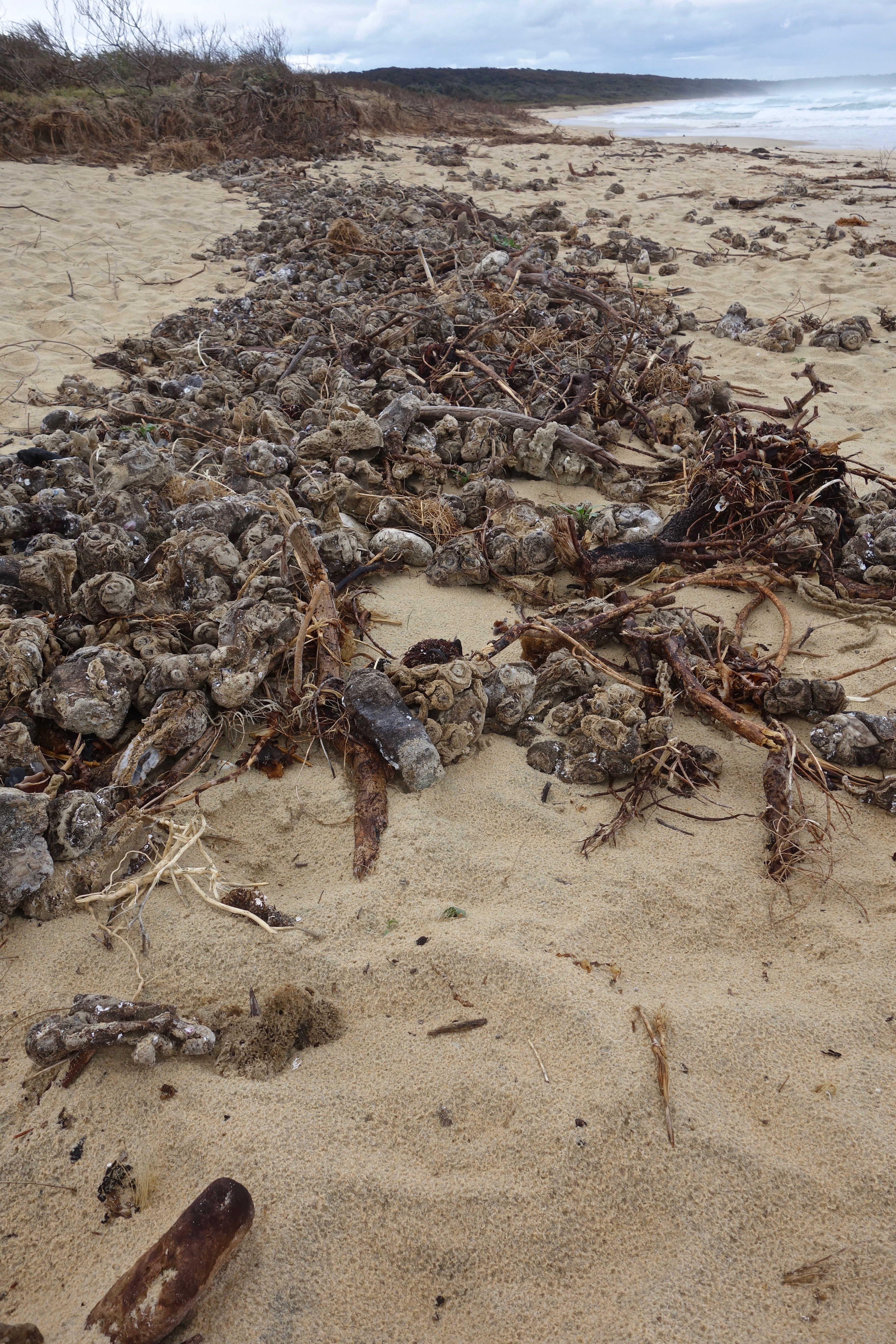The tide flows and ebbs and leaves for us a snaking line of sea debris, variously called the strandline, the high water mark, the high tide mark, the wrack line.
On Saturday, in the drizzle of the afternoon, I was wandering along the beach at Dalmeny on the south coast of New South Wales, wondering what this bulky material was that had been left behind and not washed back into the sea.

The debris was here to stay, and even to be appreciated, for it became a source of enjoyment for me as I studied the shapes and found small surprises, natural and unnatural, hiding among these dead sea things. This strandline seems to be composed of thousands of sea squirts, cunjevoi, all the same in ugly tone and form. But a few moments of close observation revealed beauty where at first there seemed to be none. There was this foot form with purple shell toes:

And a ropey sea plant hanging behind rich russet red weed:

There were a few hints of human marine life, like this green cord caught in the roots along the bank washed away by the fierce stormy sea:

Something spongey, something weedy and something blue made a still life arrangement that broke up the monotone line of sea squirts:

There was even man-made beauty in this forest of dead branches stuck in the sand. There’s something appealing about the two art forms as neighbours…

Before I left the beach that afternoon, a shipwrecked manifestation of The Scream called to me as I passed.

Australia has 10,685 beaches. Give or take… When I’m tempted to think I’ve seen everything a beach can offer, I remind myself of the thousands I’ve yet to explore. Of course, the paradox is that I love the sea as long as I’m not in it. The line of debris caught my eye simply because my back was turned to the water. But if I were a swimmer or surfer I might have ignored the beauty in the detail of this strandline.
In Australia the term for this debris seems to be strandline. But thanks to an excellent blog about shorelines in Oregon, USA, theoutershores.wordpress.com, I learnt that it can also be called a wrack line. Wrack is a great word for this stuff, having two meanings: wrack is a type of seaweed cast ashore, and wrack is also what is left behind after devastation.
***

